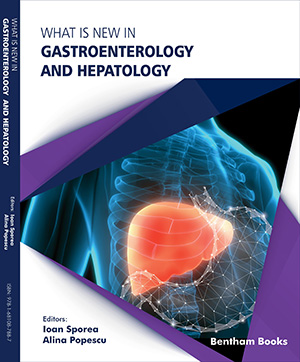Abstract
Data quality of idiosyncratic drug-induced liver injury (iDILI) cases is insufficient in the US LiverTox database due to the lack of a robust causality assessment method such as the Roussel Uclaf Causality Assessment Method (RUCAM), not allowing for appropriate use of included cases by physicians. Despite some shortcomings, case quality is much better in national DILI registries using the prospective RUCAM, with a few exemptions.
Keywords: CAMs, causality assessment methods, DILI, drug-induced liver injury, HILI, herb induced liver injury, Roussel Uclaf Causality Assessment Method, RUCAM, DILI registries, LiverTox.
[http://dx.doi.org/10.3389/fphar.2020.00842] [PMID: 32581801]
[http://dx.doi.org/10.1016/j.gastro.2005.05.006] [PMID: 16083708]
[http://dx.doi.org/10.1016/0895-4356(93)90101-6] [PMID: 8229110]
[http://dx.doi.org/10.1016/0895-4356(93)90102-7] [PMID: 8229111]
[http://dx.doi.org/10.3390/ijms17010014]
[http://dx.doi.org/10.3390/medicines7100062] [PMID: 33003400]
[http://dx.doi.org/10.1038/clpt.2011.58] [PMID: 21544079]
[http://dx.doi.org/10.1053/j.gastro.2019.02.002] [PMID: 30742832]
[http://dx.doi.org/10.1053/j.gastro.2014.03.050] [PMID: 24704526]
[http://dx.doi.org/10.1016/j.cgh.2016.02.013] [PMID: 26883072]
[http://dx.doi.org/10.1053/j.gastro.2014.05.027] [PMID: 24880009]
[http://dx.doi.org/10.1053/j.gastro.2014.07.059] [PMID: 25450085]
[http://dx.doi.org/10.1053/j.gastro.2014.11.046] [PMID: 25532807]
[http://dx.doi.org/10.1053/j.gastro.2015.04.027] [PMID: 25921378]
[http://dx.doi.org/10.1016/S1665-2681(19)31469-3] [PMID: 22710943]
[http://dx.doi.org/10.3390/ijms17030313] [PMID: 26938524]
[http://dx.doi.org/10.1055/s-0039-1685519] [PMID: 31049898]
[http://dx.doi.org/10.3390/ijms17091488] [PMID: 27608014]
[http://dx.doi.org/10.12970/2308-8044.2020.08.04]
[http://dx.doi.org/10.3390/ijms17020224]
[http://dx.doi.org/10.1002/hep.28323] [PMID: 26517184]
[http://dx.doi.org/10.1080/17425255.2018.1539077] [PMID: 30354694]
[http://dx.doi.org/10.3390/ijms180408038]
[http://dx.doi.org/10.3390/ijms21010212] [PMID: 31892250]
[http://dx.doi.org/10.389/fphar.2019.00730]
[http://dx.doi.org/10.1002/hep.20800] [PMID: 16025496]
[http://dx.doi.org/10.1053/j.gastro.2013.02.006] [PMID: 23419359]
[http://dx.doi.org/10.1053/j.gastro.2013.04.026] [PMID: 23623967]
[http://dx.doi.org/10.1016/j.jhep.2011.07.023] [PMID: 21889469]
[http://dx.doi.org/10.1016/j.jhep.2011.08.016] [PMID: 21963520]










